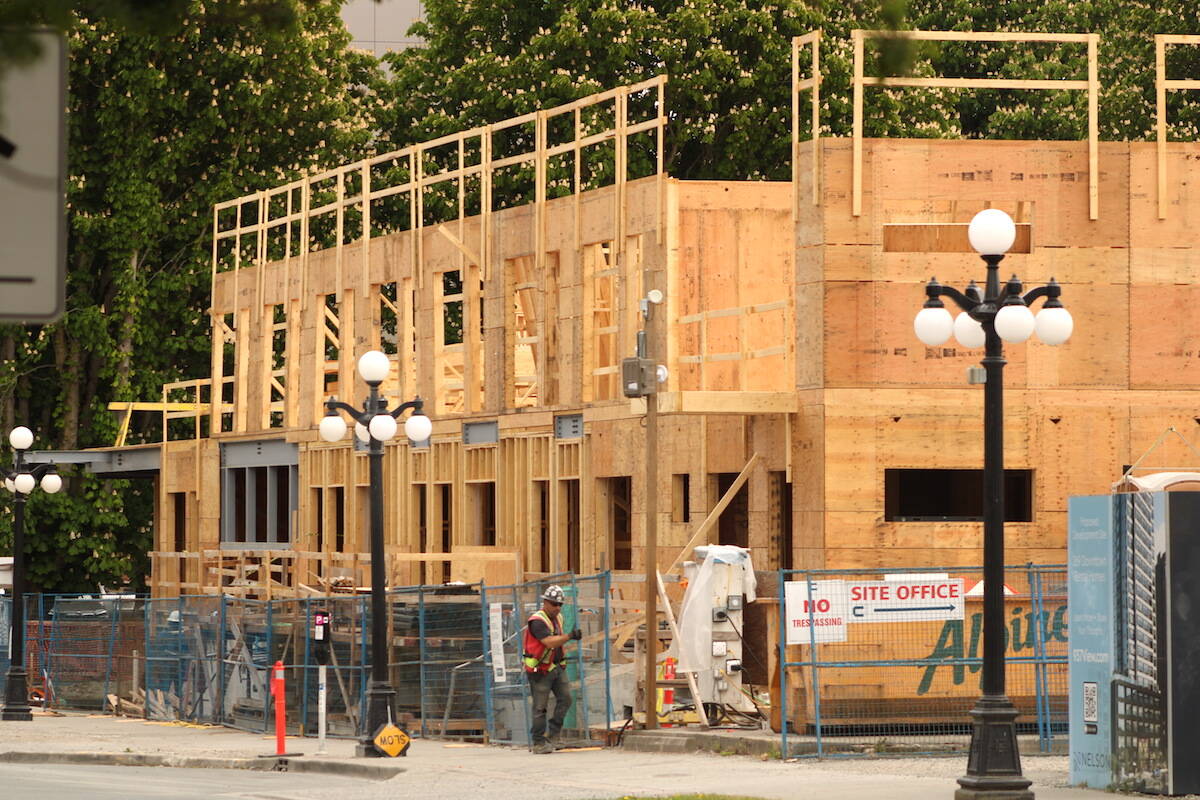Victoria has already eclipsed the total of homes it had to create this year under a provincial order, but the city has completed almost none of the non-market units it needs.
B.C.’s capital was among the first 10 communities subject to provincial housing targets that were announced last September. Aside from having to deliver a certain amount of housing over five years, the initial cohort was also required to submit reports on their progress through the first six months.
Victoria was given a target of 4,902 new home completions over the next half decade and has to produce 659 in year one under the provincial order. The city said it beat that interim target in half the time by finishing 753 net new homes in the six months since the targets were set. It also issued 316 building permits and approved another 1,628 units in the six-month stretch.
“Meeting the mark well before the deadline set by the province demonstrates that urgently needed housing can be fast-tracked when local governments lean in to the effort,” Victoria Mayor Marianne Alto said in a statement. “Our city is pulling its weight in addressing the housing crisis while city staff continue to propose innovative, forward-thinking policies and new ideas.”
The provincial targets also task communities with delivering a recommended variety of housing types based on size, affordability and unit type. The capital city is seeing less success on meeting those benchmarks.
Victoria created no new supportive housing units over the last six months and completed just eight below-markets in that time frame. The latter amounts to 0.44 per cent of below-market units that B.C. recommends the city build by 2028.
Of the 4,092 units the city is compelled to build over five years, 15 per cent must be three-bedroom spaces. Under five per cent of Victoria’s completed builds fell into that category in the first six months.
The city amended its missing middle housing policies last year after finding the program – which in part aims to facilitate more three-bedroom spaces – was too restrictive. Council in the coming months will also be presented a new family housing policy that will aim to secure more two- and three-bedroom units in new multi-family housing.
The provincial targets only represent 75 per cent the total housing that’s expected to be needed in each community.
Oak Bay and Saanich were also in the initial cohort of communities subject to the targets and neither were on track to reach their first-year requirements at the halfway mark.
Oak Bay needs to complete 664 housing units over five years. The district created seven new units in the past six months – all of which were secondary suites. Oak Bay is not on track to meet its year-one requirement of creating 56 units, its progress report found.
The district, which was the smallest centre among the first 10 communities, said it doesn’t have enough redevelopment applications in the pipeline to meet the provincial order. Compared to larger communities, the district added it doesn’t have the “development-enabling policies, systems, staffing and resourcing already in place to deliver much needed new housing.”
“The district anticipates it will be very challenging to meet the target, even with our upcoming Infill Housing program in place later this year and other changes to the regulatory framework that are planned in the next two years,” Oak Bay’s progress report states.
The province is committed to help municipalities address barriers that would prevent them from meeting their targets, and has passed legislation to support streamlined permitting and construction times, the housing ministry said in a statement.
In Saanich, Greater Victoria’s most populous jurisdiction, 195 net new homes were completed in the initial half-a-year stretch. The district is supposed to add 440 units in total in year one, before the annual targets become increasingly stringent.
Saanich Mayor Dean Murdock said in April he think’s the district will be able to reach the first-year targets by October.
“I think overall for the first six months we’re trending towards achieving that target,” he said.
The district also noted the number of housing projects that are in development should help to improve numbers.
All of Greater Victoria’s 13 municipalities are now on the list of communities that will be subject to housing supply targets.
With files from Mark Page

